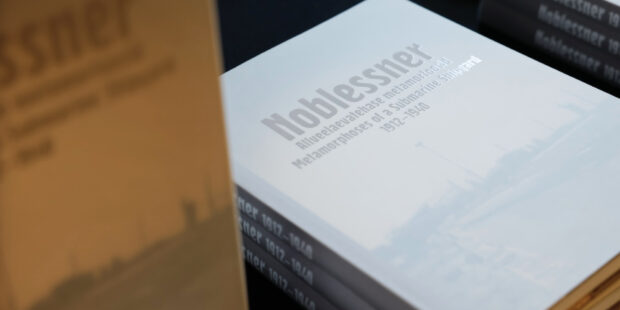The Singing Revolution
Text Antti Sarasmo Illustration archive of The Baltic Guide/Hannu Lukkarinen
On a summer night in 1988, 100,000 people, or about ten percent of the population of Soviet Estonia, gathered at Tallinn’s song festival grounds. For four consecutive summer nights, they sang and waved the forbidden flag of the Republic of Estonia, they were spiritually free.
This was Estonia’s Singing Revolution, where they mentally freed themselves from Soviet occupation and began to be citizens of Estonia once again. Estonia went on to regain its independence in August 1991, but it was only an official act. In their minds, Estonians had already become free in the summer of 1988.
The power of song
Estonia’s singing revolution started with a night singing party on June 10, 1988. During the winter and spring, many political associations were founded in Estonia, the kind of which in principle were not allowed in the Soviet Union. The country was buzzing with political activity, but it had not yet spread to the general population.
Music days were celebrated in Tartu on May 14, 1988. The traditional pop hits in Estonia’s second city were replaced by a completely different kind of music. “Five patriotic songs” were performed on the packed Tartu stage. The melodies were catchy and the words were such that they went straight to the hearts of the audience.
The name of the song series “five patriotic songs” referred to the national awakening of Estonians in the 19th century. Estonians who lived as serfs for centuries got the building blocks of a spiritual self-image when Carl Robert Jakobson gave three “three patriotic speeches”, a presentation on the history of Estonians 1868–1870. “Five patriotic songs” had the same incendiary effect as the speeches of the previous century, they said what people felt inside.
A month later, there were traditional medieval celebrations in Tallinn (Old Town Days). The program included concerts in Tallinn’s town hall square. This time, the program was a little different and when the permited time for the concert was over, both the musicians and the audience went to the song festival grounds to continue the evening. An informal concert started a singing revolution that would go on to attract hundreds of thousands of people in the coming nights.
Political song movement in Estonia
The singing revolution was ignited by the political song movement. Practically all Estonian artists made political songs between 1987 and 1991. Some songs were more straightforward than others.
One specialty was the popularity of country music. The rebellious youth of Soviet Estonia played American music, just to rebel. During his student days, the current President of Estonia, Alar Karis, played in a band that performed at student parties, the style of which was of course country.
Everything was monitored, every band was followed and every public appearance was reported. Only unofficially could you be critical. Only politically harmless bands were allowed to record, and only politically harmless songs were allowed to be recorded. Then in 1988, the winds changed and the “rockers” gained a position in the nation’s mental landscape which had never been seen before.
The past and the present joined hands in music, old poems were composed and forbidden songs began to be performed without permission. New songs were constantly being created. The words were important, but it is difficult for a foreigner to understand them, because there were so many hidden meanings in them. The most famous verses were from the “five patriotic songs”:
“I am Estonian and I will remain Estonian”
“I am Estonian and I will remain Estonian,
because I was created Estonian.
Being Estonian is brave and great
freely like my grandfather.”
Emphasizing nationalism, belittling Soviet citizenship, historical romanticism at the time of the bourgeois Republic of Estonia, anti-Sovietism… A lot of things in just one stanza.
Why the singing revolution?
Choir singing was and is Estonians’ thing. Music and songs in the Estonian language were something of their own that had remained for Estonians despite the Soviet occupation. At a spiritual turning point, the people instinctively gathered around something that was genuine and Estonian.
Music, rockers and the Singing Revolution
- Video of the band Rentaaplus, with current president Alar Karis https://menu.err.ee/media/video/1359560?contentId=1608323534
- Justament, the most outspoken representatives of the revolution and the political song movement. Got to record after Estonia became independent. https://youtu.be/cGVpQ35rx1o (Viipuri – their only song in Finnish)
To learn more about this and similar topicsEstonian Independence Old Town Days Singing Revolution Singing Revolution Estonia Song Festival Soviet Estonia Tallinn Tartu










